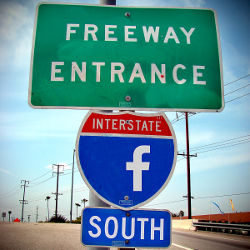
When Facebook’s Mark Zuckerberg, in a Wall Street Journal editorial published earlier this year,5 proposed connecting to the Internet those two-thirds of humanity currently offline the global computing community took keen note. Zuckerberg recited the economic benefits of Internet connectivity as well as the paradisiacal “new global sense of community” this increased access will provide. Taken at his word (and deeds) Zuckerberg is not proposing increased access to the open Internet, but instead the creation of a walled garden for the world’s poor, free to enter while exacting premium payments to leave.
Last year Facebook teamed up with a set of mobile operators and handset manufactures to create Internet.org, a global partnership aiming to connect “the next 5 billion people”4 and this year they launched their “app” in Zambia.3 As Zuckerberg describes it, the app positions Facebook as the “on-ramp to the Internet.”2 while also offering a free set of other “basic services” including Facebook Messenger and Wikipedia.
There are laudable elements to this initiative. First is their call to develop more efficient networks, applications, and appliances that respond to the infrastructure and resource realities for many in the Global South. Engineering innovations can, for example, help reduce the capital expense of broadband infrastructure, move data closer to users in distant parts of the globe through new caching technologies, or reduce the demand for data through leaner and smarter applications. This is an argument near and dear to this column’s heart and an area where the Communications readership should lead.
Second, Zuckerberg is wise to foreground cost as a major hurdle to many in the Global South striving for network access. However, his description of absent data plans does not comport with reality for most of the world’s income-poor since they use “plan-less” pay-as-you-go phone services. Voice, SMS, and data are routinely packaged together in prepaid units and savvy price-sensitive users arbitrage the offerings, choosing the most affordable communication method that meets their needs. Facebook’s mega-purchase of WhatsApp is a perfect illustration of this reality. Archetypally this app is used to send text messages over the data network at prices cheaper than had they been sent instead via SMS; shrewd users move texting to their data network in order to enjoy a savings.
Does a Facebook on-ramp, even offered for free, describe an available, accessible, affordable Internet?
The problem is not so much affordability of data qua data plans, it is the unavailability of robust data networks (see the accompanying figure) along with the generally high overall cost of communication services. Put simply, the world’s poor will use these services when they are available (in terms of infrastructure), accessible (in terms of value, social factors, education, language, and the like) and affordable. Foregrounding cost is helpful—but misreading cost as mostly a matter of cheap data plans misses the mark.
Does a Facebook on-ramp, even offered for free, describe an available, accessible, and affordable Internet? Facebook is neither a neutral nor open communication platform; it is a business with an architecture designed to support its business plan. This is not a criticism; it is just a reality. José Marichal, in his book Facebook Democracy,1 defines the architecture of disclosure as Facebook’s purpose-built environment that systematically and in some ways insidiously encourages its users to disclose increasingly personal revelatory data. Facebook invests millions in perfecting this architecture not with degraded voyeuristic interest; it is simply their business model. They capture and commodify a portfolio of these disclosures and sell them to their advertisers. And as Facebook further targets its content based upon disclosures, users increasingly find themselves trapped within a “search bubble” where information discovery is skewed toward outcomes predetermined by this very architecture. Intimate disclosures begat constrained discovery.
While Facebook’s business model is based on intimate disclosure (to my taste, often banal and narcissistic), the Internet’s hopeful promise to the Global South is for rich civic discourse, democratic development, and economic opportunity. It is possible that these two objectives are not only inconsistent but even in opposition. Moreover, a Facebook on-ramp presents significant privacy concerns (all user activities are monitored by Facebook), confounds network neutrality principles (with premium fees for activities not deemed “basic”), and can stymie innovation (as Facebook oversees apps, imposes narrowing service terms, and the like).
When Bill Gates wanted to increase Internet access to the poor within the U.S. he did not privilege Microsoft products as an on-ramp to the Internet. He gifted unconstrained open Internet connectivity to the nation’s public libraries. Mark Zuckerberg would do well to follow this lead.




Join the Discussion (0)
Become a Member or Sign In to Post a Comment